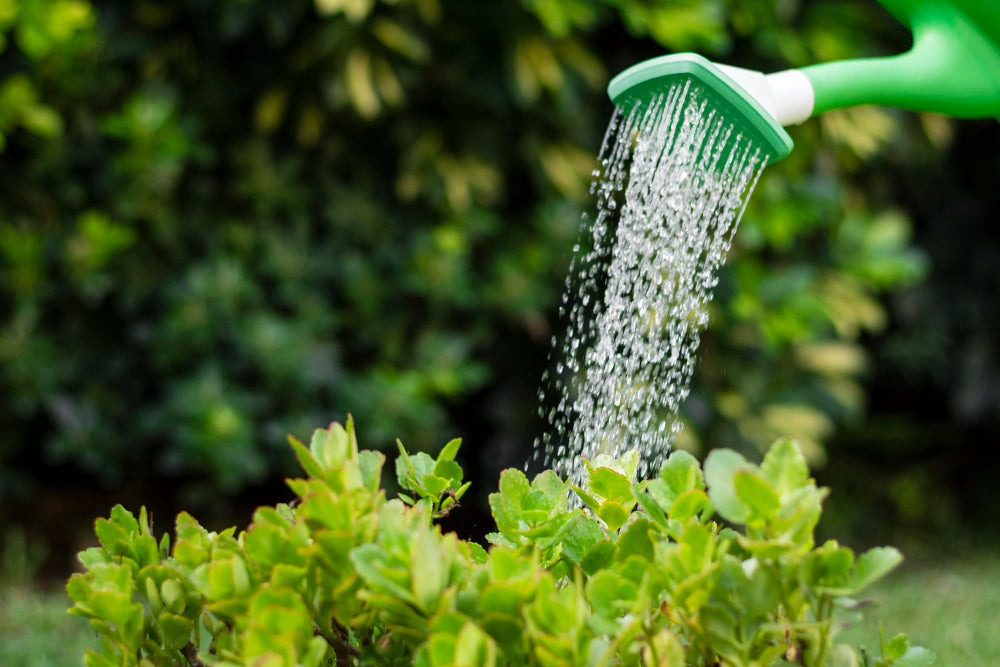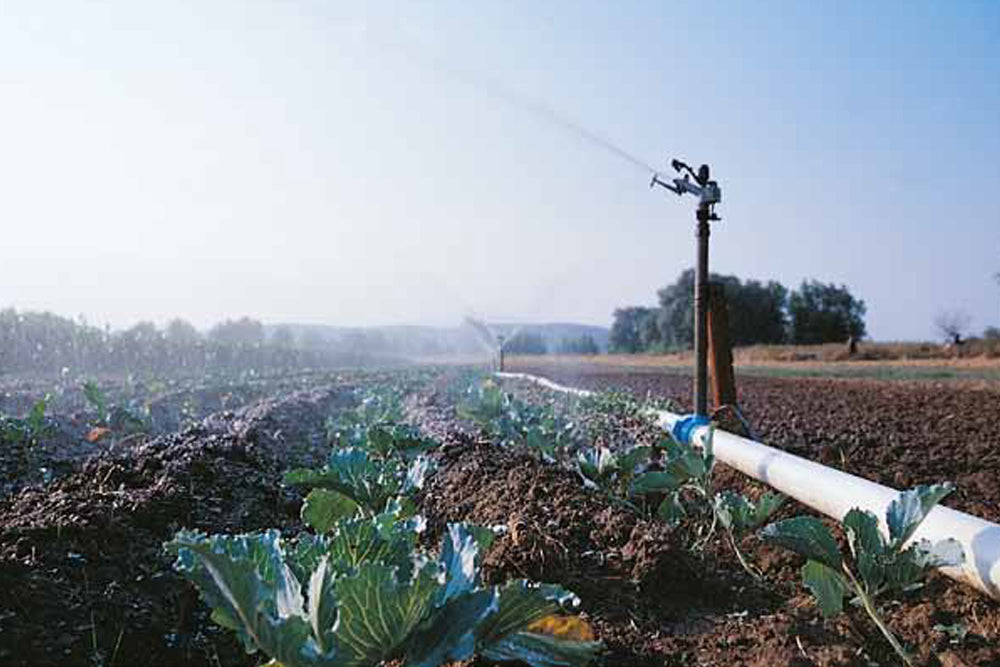Availability of Water

THE WATER CYCLE
Water can come from several different sources; groundwater, surface water, rain harvesting, or water storage. Some growers may have easy access to quite a few of these resources, while others have trouble getting sufficient water from one of them. The availability of water depends on the location of the field. In addition, the crop that is being grown and the irrigation method used has an effect on the amount of water needed. It is important for all growers to manage their water source to ensure a successful growing season.
GROUNDWATER
Groundwater may be the most reliable water source on earth and its correct management is vital to ensure its supply for the future. Unfortunately, groundwater measurements are fairly complicated, because its flow is hidden. So if the availability of groundwater is not watched carefully then problems such as supply limitations, pump wear, clogging, and over-pumping may occur.
Over-pumping is when more water is being pumped from a well than the well can efficiently supply, meaning the groundwater cannot be replenished. The pump will dry-run and be dam - aged, if the pump keeps running. If the pump pulls in sand, this can also damage the pump. Using an in-well sand separator prior to the pump unit will remove unwanted sand. However, the best way for the farmer to try to prevent damage to the water supply and pump is to analyze how much water the well can provide.
Water availability on Earth:
- 3% is fresh or 1% available for use
- 70% is held in the ice caps
- 30% is available as groundwater or from lakes and streams
When selecting the correct pump for pumping groundwater, the pH of the water, the temperature of the water, the minerals in the water and the salinity are important. The length of the irrigation period and the total run time of the pump must be considered to provide enough time for service and repairs, also if additional irrigation run times are required due to extremely hot temperatures. If electrical use rates are based on when the pump is operating, an important consideration is to select the pump size so that water delivery can be made in off peak operating times.
The type of irrigation system being used should be taken into account when selecting a pump due to different operating pressures that may be required from, say, a sprinkler system compared to a drip irrigation system. An incorrect selection can lead to inadequate water and/or pressure. The water quality may also cause increased wear on the impellers and other pump components.
It is possible that the availability of water in a well is constantly changing. If that is the case, a VFD should be used; they are designed to react to unsteady water flow and safeguard the pump from dry-running. Similarly, if the water table drops during the irrigation season a VFD may be used to ensure the flow and pressure required for the irrigation system. The pump and motor selection must be made for the maximum drawdown level to ensure the proper water and pressure requirements.
In some cases a farmer may know that if he pumps water straight from the well, he will not have enough water. In that case a reservoir can be built to store the water and pump from this surface supply when required. Water is steadily pumped into a reservoir for longer time periods than it is pumped out while it is pumped out of the reservoir at a faster rate than it is pumped in. The amount of water in the reservoir therefore bal- ances out and can provide a sufficient supply of water for the farmer.
This may be done for frost protection systems where a large quantity of water may be required. However, surface storage of water may lead to the need for treatment, due to algae or other organic materials that find their way into the reservoir. Once water is placed into a reservoir it must be treated as surface water.
SURFACE WATER
Surface water is the second most common source of fresh- water. It comes in many different forms, from lakes, springs, rivers, ditches, streams, and so on. Water can easily be pumped from any surface water location. Nevertheless, there are some factors that need to be considered in order to design an efficient surface water pumping system.
The first thing that one should realise is that if a public surface water source is being used, several users will be pumping from it, and the water level can be significantly lower during dry seasons. In order to ensure an adequate amount of water and to prevent dry-running a pump, a water storage facility should be created.
If the water source is prone to flooding, submersible pumps should be used; dry motor pumps will be damaged beyond repair if they become submerged in water. If a pump is in an area where it may be stolen, it should be protected with a fence or structure to prevent theft or at least make it diffucult to steal.
Another factor to consider when designing a surface water pumping system is the water quality. Surface water can carry a substantial amount of mud, silt, and other particles during the rainy and snow-melting season. It is important to con - struct a settling canal before the pump suction to prevent these particles from entering the pumping system. The canal needs to be at least twenty feet long, and its flow velocity should be no more than 0.05 feet per second when water is being pumped. The particles that settle in the canal need to be removed before every irrigation season so that it can function efficiently. Organism growth in the canal may also affect its performance. The canal should therefore be covered so that sunlight will not stimulate organic growth. The water can also be treated or pre-screened at the intake of the pump with self-cleaning screens or a series of screens to prevent trash and other organic materials from entering the pump and interfering with the operation of the pump.
RAINWATER HARVESTING
When groundwater and surface water is not available or does not provide enough water, artificial reservoirs can be created to bring an ample amount of water to a farm. Two types of man- made reservoirs are rainwater harvesting systems and water storage systems. This option is of course limited in many dry climates where there may not be sufficient rainfall to make this practical. It can however be another source to supplement surface or groundwater supply.
Rainwater can be harvested and stored for future use. Sur - faces such as roofs, roads, and paved areas are used to collect the water, and it is then stored in tanks. In order to design a sufficient rainwater harvest system, the demand of water, average amount of rainfall, and size of storage tanks have to be considered. This system alone usually does not capture enough water to perform all irrigation applications, but it has the ability to carry out most. Treatment of the water during storage may be required as runoff from roofs and other structures may create water quality issues.
WATER STORAGE
A water storage system can either be built as an above ground, open-air basin, or as an underground water tank. These two different types of water storage systems perform the same function, holding water that will be used during peak demand periods, because the main water source cannot meet the peak demand for water. The system that is above ground is less expensive to build or remove. However, water can evaporate, which may lead to a build-up of salt. Since it is above ground, algae and moss are more prone to grow, the basin takes up productive space, and there is the risk of drowning when working in or around the basin. Underground tanks do not pose the problems that open-air basins do. However, they are more expensive to build and remove.
For both types of water storage systems, parallel operating boosters should be used for the distribution pump system. They offer several benefits, including smaller motor sizes, starting amp reduction, and water hammer reduction.
A water bank is a further type of water storage. This involves pumping water down a well in one place to replenish the aquifer, thereby storing it. The water is then drawn up again when needed.


